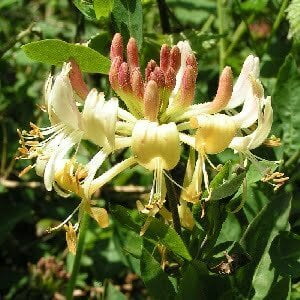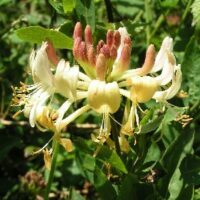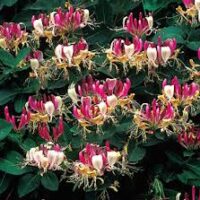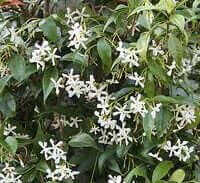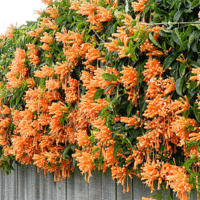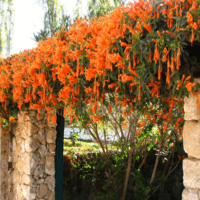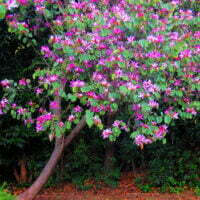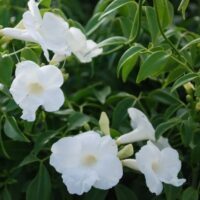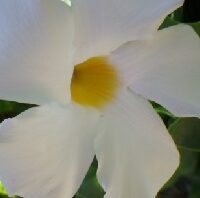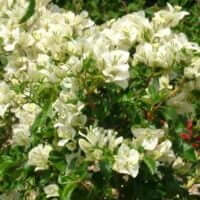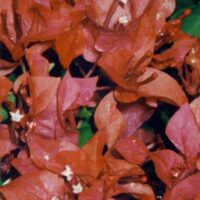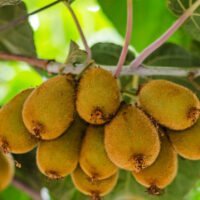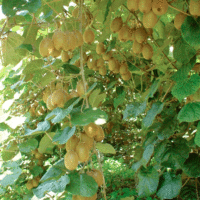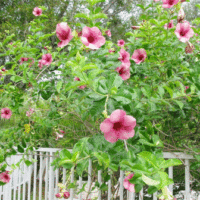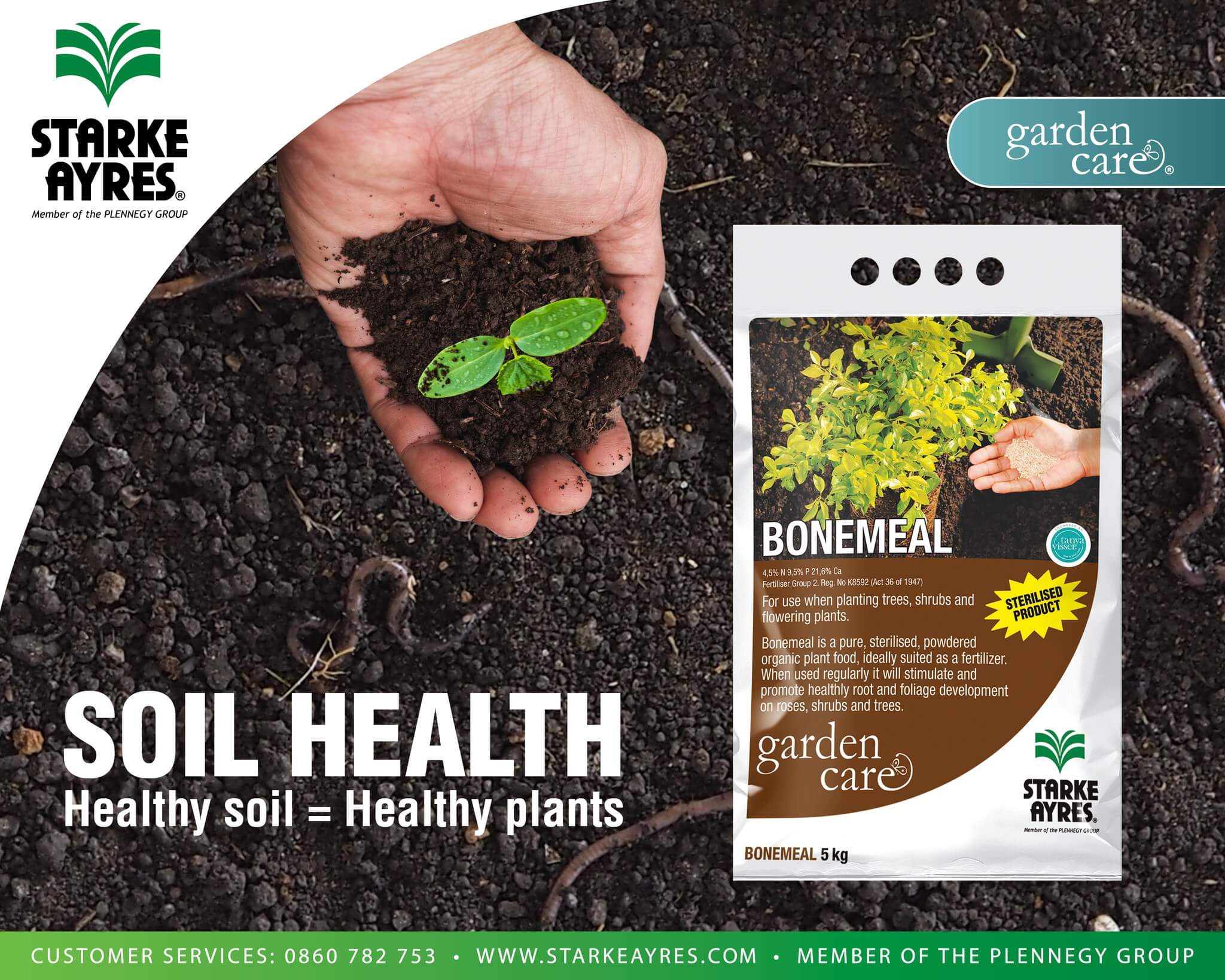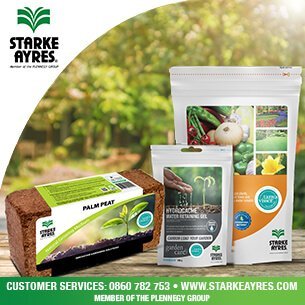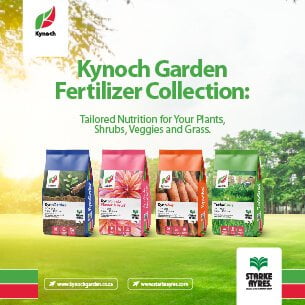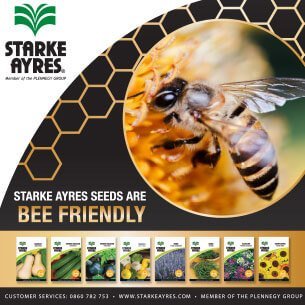| Botanical name | Lonicera periclymenum |
|---|---|
| Plant Care |  Deciduous Deciduous – Sheds Its Leaves Annually  Full Sun Full Sun – Prefers 6 or more hours of sun per day.  Frost Sensitive Frost Sensitive – Will Get Damaged and Possibly Killed During Periods of Frost.  Moderate Watering Moderate Watering – Requires Regular Watering.  Non Indigenous Non Indigenous – Exotic to South Africa. |
| Size | 3 m tall and covers trellises, fences and pergolas with it's evergreen leaves. |
| Categories | |
| Flowers | August September October A busty, deciduous climber bearing fragrant creamy-yellow trumpet-shaped flowers in spring. New buds are fringed with purple. |
| Common name(s) | English honeysuckle |
| Origin | |
| Uses in landscape design | This plant is great for trellises, fences and pergolas. |
| Maintenance | Needs very little attention apart from occasional watering and trimming. |
| Soil conditions | Likes average soil. |
| Uses | Honeysuckle is ideal as a cut flower for vases. |
| Interesting info | This plant is a bushy, deciduous climber and is a well loved garden plant all over the world. Its beautiful, has a lovely fragrance and multiple medicinal uses. |
| Propagation | Propagate by cuttings or rooted runners, replant them, keep moist for a few days until established. |
| Other languages | Engelse konferfodie (A) |
| Harvest | Pick flowers any time of year. |
Lonicera periclymenum (English honeysuckle)
- Botanical name: Lonicera periclymenum
- Common name(s): English honeysuckle
- Categories: Climbers and Creepers
Plant description:
A bushy, deciduous climber bearing fragrant creamy-yellow trumpet-shaped flowers in spring. New buds are fringed with purple.
Botanical Pronunciation: lon-ISS-er-a per-i-sli-me-num
Lonicera periclymenum requirements and features
info on these icons
Moderate Maintenance
Requires moderate maintenance.
Prohibited Use Notice: No Data Scraping Allowed Except for Search Engine Indexing:
The content provided on PlantInfo.co.za is intended for personal, non-commercial use only. Unauthorized extraction, reproduction, or use of the data, including scraping, for any purpose other than search engine indexing is strictly prohibited. Violations of these terms may result in legal action. By accessing and using this website, you agree to comply with these conditions and acknowledge the legal restrictions on the use of our content.
August September October
A busty, deciduous climber bearing fragrant creamy-yellow trumpet-shaped flowers in spring. New buds are fringed with purple.
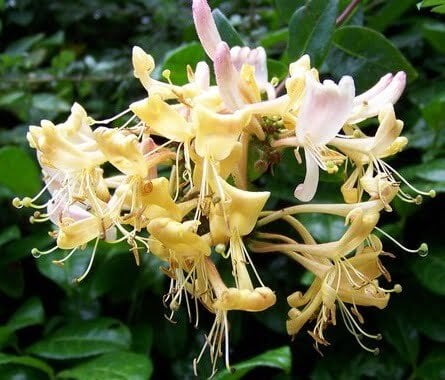

Related plants
Climbers and Creepers
Climbers and Creepers
Climbers and Creepers
Climbers and Creepers
Climbers and Creepers
Bougainvillea Bambino TM Beesnees (Bougainvillea Bambino Beesnees)
Climbers and Creepers
Bougainvillea Bambino Toffi PBR (Bougainvillea Bambino Toffi)
Climbers and Creepers
Climbers and Creepers






